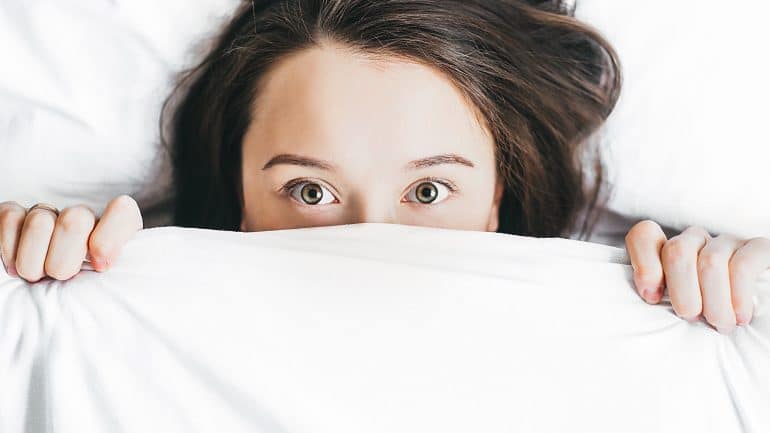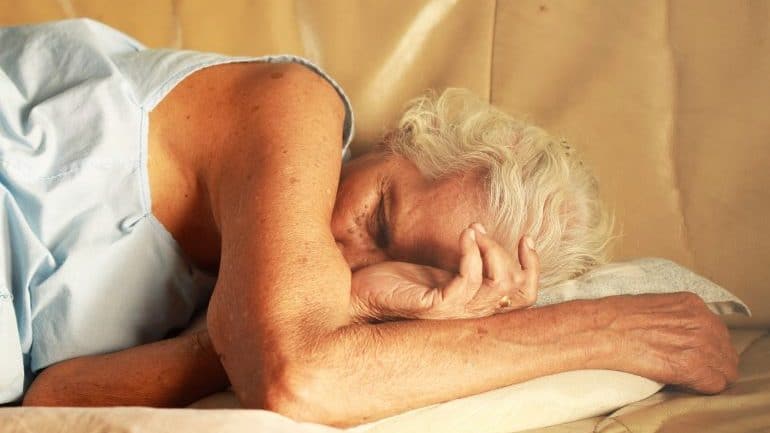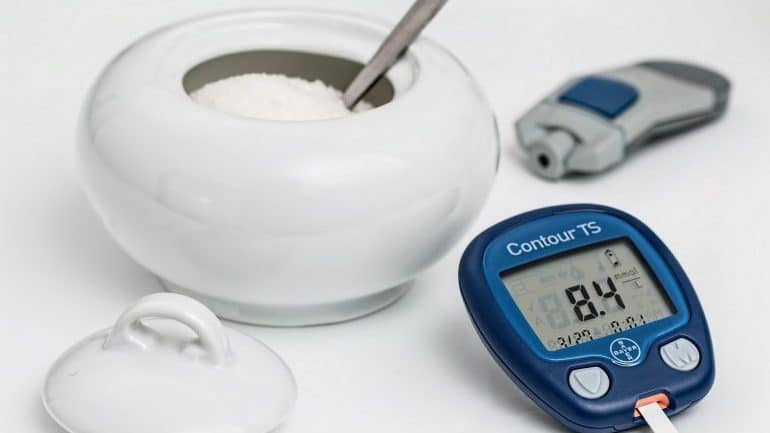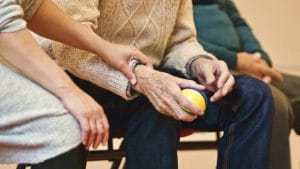27 Shocking Insomnia Statistics You Didn’t Know
written by / January 7, 2022
We’re all aware of how a good night’s sleep is beneficial to our physical and mental health. In addition to being key to several vital functions, it positively affects our memory and learning capabilities.
Unfortunately, it’s not that simple to get enough quality sleep every night. Insomnia is one of the most common sleep disorders—millions of people struggle to fall and remain asleep.
So, if you’ve ever felt alone while staring at the ceiling in the middle of the night, these fascinating insomnia statistics should prove you wrong.
Alarming Insomnia Statistics for 2022
- Almost 40 million Americans suffer from chronic insomnia.
- Up to 95% of Americans have experienced at least one episode of insomnia in their lives.
- About 1 in 4 Americans will develop insomnia each year.
- It’s estimated that in 2023, there will be 130,482,156 total cases of acute insomnia.
- According to stats, 25% of children suffer from behavioral insomnia.
- About 75% of people suffering from depression have insomnia.
- 39.1% of people who currently have or have had insomnia claim the sleep disorder runs in their family.
- People with chronic insomnia are four times more likely to report having hallucinations.
- People taking sleeping pills may have a three-time higher risk of early death.
- The annual costs related to insomnia in the US surpass $100 billion.
Insomnia: The Most Prevalent Sleep Disorder

In this section, you will find general statistics and facts on insomnia, which is the most prevalent sleep disorder in the world.
1. 50–70 million Americans suffer from a sleep disorder.
(American Sleep Association)
Insomnia is just one type of sleep disorder, but it’s the most common sleep disorder according to the latest statistics. It seems that sleep statistics for 2022 won’t change much in this regard.
2. Almost 40 million Americans suffer from chronic insomnia.
(NCBI)
And the number is rising. This clearly shows that this pervasive sleep disorder is becoming one of the nation’s major health problems. Even some famous people suffer from insomnia, as you can see in this interesting infographic.
3. 30%–35% of adults in the US have had some short-term insomnia symptoms.
(Sleep Education)
According to the latest sleep disorders statistics, roughly a third of Americans have had some sort of problem falling asleep or staying asleep.
4. About a third of the general population have some insomnia symptoms.
(NCBI)
If you’d like to know what percentage of the population has insomnia, then there you have it. Approximately 30% of the general population complains about experiencing insomnia to a certain degree. These numbers are based on insomnia statistics collected on a worldwide level. As you can see, this is a prevalent problem that can’t be overlooked.
5. Up to 95% of Americans have experienced at least one episode of insomnia in their lives.
(Medscape)
This fact indicates that this sleep disorder impacts us all. Since sleep is key to both our physical and mental health, we need to do our best to solve this problem.
6. About 1 in 4 Americans will develop insomnia each year.
(ScienceDaily)
Although this piece of sleep deprivation statistics may seem devastating, the good news is that roughly 75% of them never develop chronic insomnia.
7. It’s estimated that in 2023 there will be 130,482,156 total cases of acute insomnia.
(GlobalData)
GlobalData epidemiologists made this forecast for seven countries: the US, France, Germany, Italy, Spain, the UK, and Japan.
8. A large percentage of stay-at-home mothers experience insomnia.
(SleepFoundation.org)
According to the insomnia statistics in America, about 75% of mothers who stay at home experience insomnia. This can be dangerous, especially when parents get behind the wheel while they are exhausted.
Insomnia and Gender
Here, we will be taking a closer look at insomnia prevalence in different genders, including statistics and facts on how insomnia affects women versus men.
9. Women are twice as likely to develop insomnia.
(Michigan Health)
Hormones are just one reason women are more prone to insomnia. Another is that women are more inclined to mood disorders, which can lead to sleep problems. Moreover, women often become overwhelmed with balancing their work and family responsibilities, thereby affecting their sleep habits.
10. About 78% of pregnant women experience insomnia.
(American Pregnancy Association)
The sleep disorders statistics collected on a worldwide level show that women often have sleep problems during their pregnancies. There are a number of reasons for this, from back pain to heartburn to anxiety. Sleep problems become especially common in the third trimester, when finding a comfortable sleep position gets more and more challenging.
11. During menopause, 40%–50% of women have episodes of insomnia.
(NCBI)
This is due to the changes in hormonal levels that occur during menopause.
What Age Group Does Insomnia Affect the Most?

Insomnia can affect people at different stages of their lives. In this section, we’ll look at insomnia and how it affects certain age groups.
12. In one study, 43% of people aged 65 and older had difficulty falling or staying asleep.
( NCBI)
Seniors are more likely to have insomnia than other age groups. Most likely, this is because of the sleep pattern changes that normally come with age. However, it can also be the result of a medical condition.
13. 9.4% of adolescents suffer from insomnia.
(NCBI)
According to this study, adolescents with insomnia are also at a higher risk for depression.
14. According to recent insomnia stats, 25% of children suffer from behavioral insomnia.
(NCBI)
This type of insomnia is characteristic of young children who have trouble falling asleep and frequently wake up. In many cases, they became dependent on their parents sending them to sleep by singing or rocking them. Instead, they need to learn to fall asleep using self-soothing skills. There are several behavioral treatments that can help with this problem.
Causes of Insomnia
What causes insomnia? Here, we will be focusing on the stressors that can result in insomnia.
15. About 75% of people suffering from depression have insomnia.
(NCBI)
Researchers studying depression found out that there’s a strong link between this mental health problem and sleep disorders. Moreover, insomnia is one of the symptoms used to diagnose depression. However, this goes the other way around as well—people with insomnia are more likely to develop depression.
16. 39.1% of people who currently have or have had insomnia claim the sleep disorder runs in their family.
(NCBI)
According to sleep statistics, good sleepers are less likely to report a family history of insomnia. Still, we can’t claim with certainty that insomnia is hereditary. Further research needs to be conducted to investigate the relationship between genetic factors and insomnia.
17. 24% to 36% of insomniacs suffer from anxiety disorder.
(NCBI)
When it comes to lack of sleep, statistics show that stress and anxiety can often lead to insomnia. However, sleep deprivation can also increase stress and anxiety. Therefore, many find themselves stuck in a vicious cycle. With this in mind, try to create a soothing sleep environment that will help you doze off.
18. Binge drinking increases the risk of insomnia in the elderly.
(American Academy of Sleep Medicine)
According to sleep deprivation statistics in America, those who frequently binge drink (more than two days a week) are 84% more likely to have problems with insomnia. This piece of data comes from a study examining the relationship between binge drinking and insomnia symptoms in adults aged 55 and older.
Consequences of Insomnia

Insomnia can have many negative effects, and we’ll be discussing those in this section.
19. Insomniacs cause 2.5 times more car crashes because of tiredness than those who sleep well.
(NCBI)
Obviously, insomnia can have severe consequences considering that car crashes can result in serious injuries and fatalities. Therefore, a number of car accidents could be prevented by properly treating people with insomnia.
20. People with insomnia are 28% more likely to develop Type 2 diabetes.
(NCBI)
Based on the insomnia statistics collected in the world, insomnia can lead to a number of serious diseases. Type 2 diabetes is just one of them, so it’s of great importance to identify this sleep disorder and find the right treatment.
21. People with chronic insomnia are four times more likely to report having hallucinations.
(NCBI)
This is further proof that insomnia may lead to serious medical problems. That’s why it’s essential to treat this sleep disorder.
22. Insomniacs have 20 times greater odds of developing a panic disorder.
(Get Sleep)
According to the same study, some reliable data on sleep indicates that people suffering from insomnia are more prone to other anxiety disorders as well. Therefore, getting enough sleep can greatly improve our mental health.
Insomnia Treatment
How do you treat insomnia? There are many ways to deal with this sleep disorder, which we will be looking at in this section.
23. About 4% of adults in the US use prescription sleep aids every month.
(CDC)
Interestingly, this percentage increases with age and level of education. Also, more women use prescription sleeping pills than men.
24. People taking sleeping pills may have a three-time higher risk of early death.
(BMJ Journals)
According to this study, as well as some sleep statistics collected on a worldwide scale, people who take at least 18 sleeping pills a year are three times more likely to die early. As expected, with a higher dosage of a hypnotic drug for poor sleep comes a higher risk of early death.
Insomnia-Driven Costs
What are the costs, both direct and indirect, resulting from insomnia? We hope to answer this question in the following section.
25. The annual costs related to insomnia in the US surpass $100 billion.
(NCBI)
With a growing number of insomniacs, there’s a clear increase in both the direct and indirect costs associated with this sleep disorder.
26. Insomnia results in direct costs of over $13 billion per year.
(NCBI)
The direct costs associated with the symptoms of insomnia include physician visits, prescription medications, and relevant medical procedures.
27. The indirect annual costs associated with insomnia amount to $77–$92 billion.
(NCBI)
This fact is more proof that this sleep disorder can be costly. In particular, the costs are the result of motor vehicle and workplace accidents, reduced productivity, and work absences.
To Sum Up
As you can see, a lack of sleep can have numerous adverse effects on our health, our quality of life, and society. But before we try to find the solution, we need to truly understand the problem and its causes. That’s why we’ve compiled this comprehensive list of insomnia statistics, which will hopefully help you get a better picture of this growing problem.








